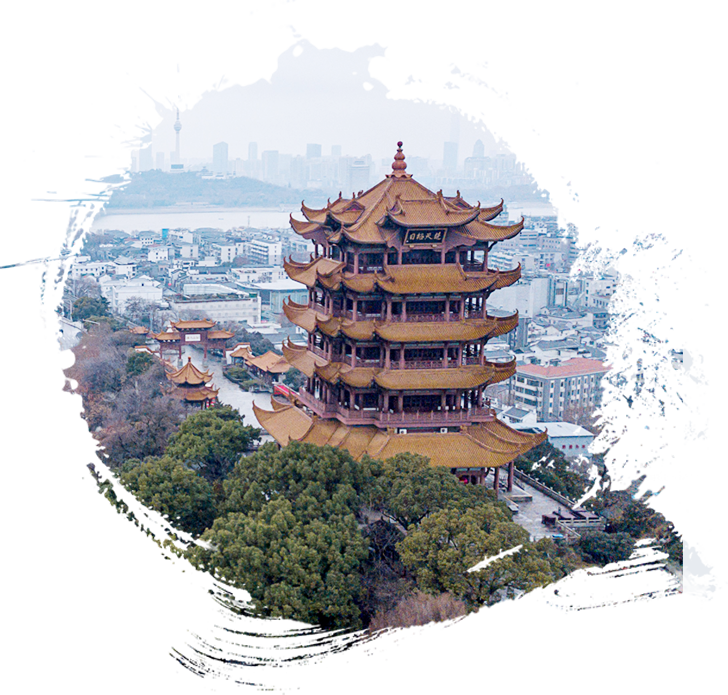The exhibition of “Wuhan – A City on the Edge of the Yangtzi River” is a cooperation of the Confucius Institute Headquarters with Prof. Tan Gangyi and his team from the School of Architecture and Urban Planning, Huazhong University of Science and Technology of China. Wuhan is the capital of Hubei Province. Geographically, it is located in the center of China in an area with well-developed transportation. The Yangtze River and Hanjiang River flow across the city, and separate the city into 3 towns: Hankou ( used to be called Hankow), Hanyang and Wuchang. Its unique location and the unseparable relation with rivers brought trades, transportation, wars, and even revolutions to the city, and also cultivated the special cultural characteristics of its people. In this exhibition, we would like to go on discussing the sustainability of cultural heritage by looking at a city in three angles. In the Yellow Crane Tower, we will show you the Chinese people’s pursuit on the harmony between human and nature, the peaceful and composed aesthetic attitudes, the unique construction intelligence, and the uninterrupted cultural traditions. In the section of Memory and Reflection on Ancient Wuchang City and City Wall, we would like to reveal nowadays Chinese people’s memory on those disappeared architectural heritage, and our efforts on finding the cultural identity of our own in virtual reality and arts. The “Wuhan and Its Citizens from Past to Present” Photography Exhibition would like to portray the life of Wuhan citizens from the past to present, and the unique characteristics of city spirits.



